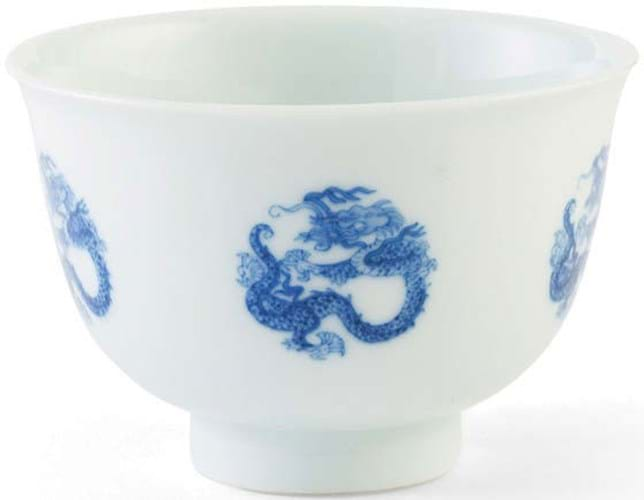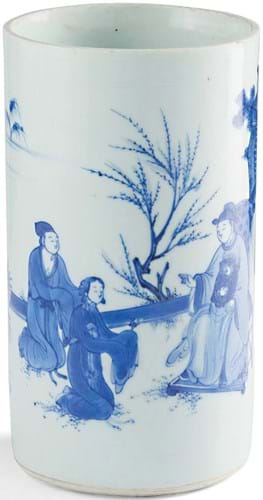A total of 14 lots in the Asian art sale held behind closed doors by Lyon & Turnbull (25% buyer’s premium) on May 13 came from the Earls of Crawford and Balcarres of Balcarres House in Fife. The estate, commanding a view across the Firth of Forth, has been in the Lindsay family since 1595.
A Qianlong (1736-95) mark and period enamel lotus vase, pictured in ATG NO 2443, was the highlight, selling at £36,000. Decorated with a delicate floral design against a yellow ground, the 11in (27cm) vase is of a type made in the third quarter of the 18th century at the Imperial Workshops in Beijing. It would once have had a pair of bronze dragon-shaped handles.
Also from the Earls of Crawford and Balcarres was a textbook Kangxi (1661-1722) blue and white cylindrical form brush pot painted with a narrative scene. The composition of two kneeling figures paying tribute to a seated officer in a garden probably relates to one of the Ming epics – the literary inspiration for many ‘scholars’ objects of the period. Estimated at £500-700, it took £11,000.
It was during the long reign of Kangxi that the imperial porcelain factories at Jingdezhen, inactive during the upheavals of the late Ming period, were reopened and a new era of high-quality production and technical innovation begun.
Wine cup

A Kangxi ‘dragon medallion’ wine cup – £20,000 at Lyon & Turnbull.
Hammered down for £20,000 was a mark and period wine cup c.1700 finely pencilled with an underglaze blue design of five dragons, symbols of imperial power, with a six-character reign mark to the base. Bowls of this ‘dragon medallion’ type, produced in both underglaze blue and copper-red, appear in a number of publications.
The technique of applying a brilliant coral-red enamel over white-glazed porcelain was one perfected at Jingdezhen during the later Qing period. A pair of 4in (11cm) diameter bowls, decorated in reserve with freely executed bamboo shoots, had six-character Qianlong marks in underglaze blue to the base and were deemed of the period. In the possession of the same London family for more than a century, they sold for £19,000.
Lighter jades in favour
Qing and Republic period jades remain a market strength with the fashion very much towards the lighter coloured stones.
Another top-performing lot in the sale was a late-19th or early-20th century white jade table screen carved on one side with a scholar and two young attendants walking in a mountainous landscape and to the reverse with two scholars and a crane gliding in the sky.
Key to its appeal was its original elaborately carved hardwood stand inlaid with silver wire.
It sold at £13,000.















